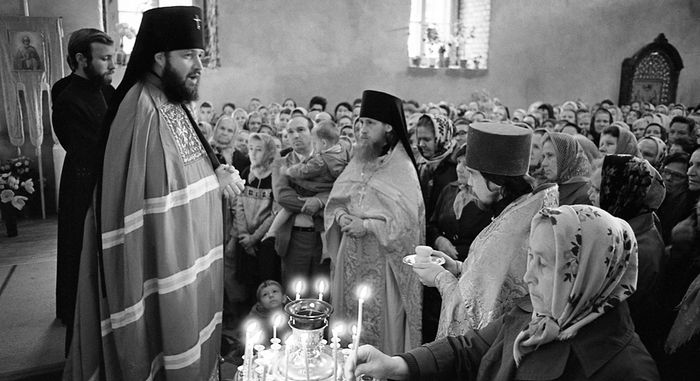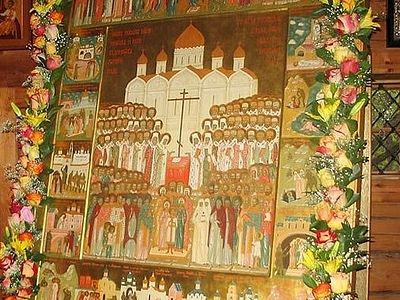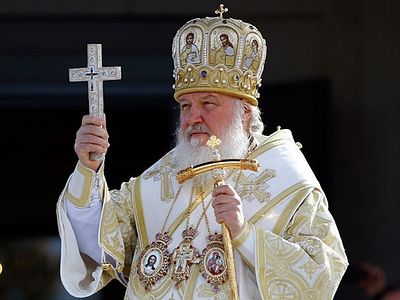Moscow, January 30, 2017
The 1917 October Revolution was the result of the spiritual degradation of the Russian people, according to His Holiness Patriarch Kirill.
Speaking to the State Kremlin Palace, the patriarch emphasized, “The events of 1917 and the dramatic consequences that followed had profound spiritual causes. The fundamental break in the traditional way of life—I am not talking about the administrative or political model, but about the spiritual and cultural self-identity of the people—became possible only because the daily life of people, first of all among the elites, lost something very important,” opening the 25th International Nativity Readings, dedicated to the one hundredth anniversary of the Revolution.
As reported on the official ROCOR site, he went on to explain that, despite their material well-being, the people lost their true faith in God and came to disdain the traditions their ancestors had struggled for, which led to political and social divisions taking precedence over national unity and cultural cohesiveness.
Despite the great apostasy of the twentieth century, the patriarch also spoke of the hosts of New Martyrs, now numbering over 1,700, who became “a spiritual foundation upon which faith has been reborn in our lands.”
“The main lesson we must glean from the last century is that we cannot build human life and society without God. Such societies, in the words of Holy Scripture, are ‘houses built upon the sand,’” the primate underlined.
In closing the work of the forum held January 25—27, the Nativity Readings “1917—2017: Lessons of the Century” released a summary document in which they noted that the turn of the twentieth to twenty-first centuries was a time of renewal of faith for the Russian people and the Russian Orthodox Church, building on the foundation lain by the New Martyrs.
The document contains eighteen points, summarized here:
1. Despite the catastrophes of the twentieth century, the Lord ever guides His people towards salvation, as witnessed by the spiritual transformation that began in the late twentieth and early twenty-first centuries;
2. The root cause of the revolutions, civil war, and repressions was the loss of sincere faith, replaced by philosophies and political ideas from outside;
3. The New Martyrs and Confessors of the Russian Church showed fidelity to Christ by their blood, making possible the revival of faith and Church life;
4. The restoration of the patriarchate in 1917 on the eve of the revolution was providential, with St. Tikhon’s becoming a symbol of faith and fidelity to Tradition;
5. The providence of God is also seen in the Russian emigration, which led to many new people accepting the Orthodox faith;
6. The Great Patriotic War was a special challenge for the Church, inspiring Russians to understand the importance of spiritual foundations in life;
7. The Russian Church’s patriotic position during the war helped change the state’s attitude towards Orthodoxy, allowing for greater Church activities, although without wholly eliminating the Church-State conflict;
8. The increased repression of the late fifties and early sixties are an indicator of the internal contradictions between the Soviet government and the Church;
9. The 1988 1000 year anniversary of the Baptism of Rus’ was a new milestone for the nation, with the government abandoning the policy of atheism and discrimination against religion;
10. It should be recognized that Christian values persisted despite atheistic pressures, as evidenced in literature, art, and cinema;
11. While giving a just assessment of the crimes against the faith and the Church, the sacrifice of many people in the realms of science and technology and education must also be recognized;
12. The 1990s were a time of spiritual freedom with millions returning to Christ, thousands of churches and monasteries opening, and theological education being revived;
13. However, a serious problem also arose in the same period, with calls for secular reformation to replace the former atheism. To this the Church opposed the Gospel message through all possible channgels;
14. The collapse of the united government in the early 1990s led to various ethnic, social, economic, and cultural problems, through which the Russian Orthodox Church continued to stand with the people;
15. To strengthen ties between countries with a common history and culture, it is necessary to strengthen the rule of the Russian Orthodox Church as a unifying institution and guarantor of the spiritual tradition;
16. An important role should belong to the Church in the process of uniting society to preserve spiritual, cultural, and human relations;
17. Representatives and leaders of political and social forces should take responsibility for the consequences of their actions, and the bases of any reforms should be the consolidation of the people, and the preservation of traditional spiritual and moral values;
18. It should be noted that the Russian Orthodox Church is the only social institution to continue uninterrupted in all periods of Russian history, thanks to the Church’s foundation in Christ the Savior.
Patriarch Kirill also noted that, despite the good work of the Nativity Readings, more work is to be done in examining the twentieth century Russian history, requiring “a systemic, balanced understanding of the reasons and consequences of the events,” based on an exhaustive and honest evaluation.





